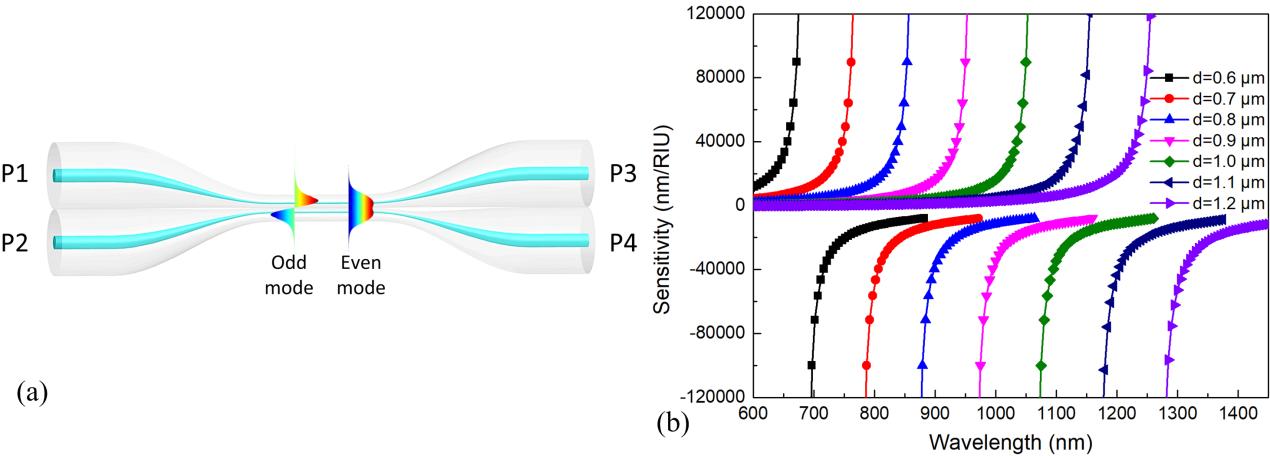Author: |
Recently, an ultrasensitive label-free microfiber coupler biosensor was developed by Prof.’s Yihui Wu’s group in State Key Laboratory of Applied Optics, CIOMP. Such immunosensors have huge application potential for the detection of cardiac or cancer biomarkers due to simple detection scheme, quick response time, ease of handling and miniaturation.
Myocardial infarction (MI), known as heart attack, is a major cause of morbidity and mortality worldwide. Sensitive detection of cardiac biomarkers is critical for clinical diagnostics of MI while such detection is quite challenging due to the ultra-low concentration of cardiac biomarkers. Cardiac troponin I (cTnI) is considered as ‘gold standard’ biomarker for the detection of acute MI due to its remarkable specificity and sensitivity. The levels of cTnI became a predominant diagnosis index for MI since it is usually produced only in the myocardium and shows high specificity to cardiac injury.
So a label-free immunosensor based on optical microfiber coupler (OMC) has been developed for the ultrasensitive detection of cTnI. For refractive index sensing characterization, an ultra-high sensitivity of 91777.9nm/RIU was achieved when the OMC works around the dispersion turning point, which is the highest experimental demonstration in the field of fiber-optic evanescent biosensors. For biosensing, the immunosensor with good specificity showed a linear wavelength shift in the range of 2-10fg/mL and ultra-low detection limit of 2fg/mL. The results suggested that the proposed immunosensor is a useful tool for practical application in clinical diagnosis.
This work was published on Biosensors and Bioelectronics (DOI:https://doi.org/10.1016/j.bios. 2018.01.061). It was supported by the China-Israel International Science and Technology Cooperation Program, Natural Science Foundation of China and National High Technology Development Program of China.

Fig. 1. (a) Schematic diagram of the microfiber coupler with even mode and odd mode, (b) Modeled sensitivity versus wavelengths at the turning point with different diameters (0.6-1.2 μm).(Photo by CIOMP)

Fig. 2. (a) Transmission spectral responses near the turning point of effective group index difference (The spectra are offset for clarity), (b) Peak wavelength shift with different concentrations of cTnI, (c) Real-time response transmission spectrum with PBS, 2fg/mL and 4fg/mL.(d) Measured response to cTnI antigen and other non-specific protein (CRP, IgG, PSA) with the same concentration of 10 fg/mL in PBS buffer. (Photo by CIOMP)
Contact:
Prof. Yihui Wu, Changchun Institute of Optics, Fine Mechanics and Physics.
Email: yihuiwu@ciomp.ac.cn
Dr.Wenchao Zhou, Changchun Institute of Optics, Fine Mechanics and Physics,
Emai: zhouvc@ciomp.ac.cn
